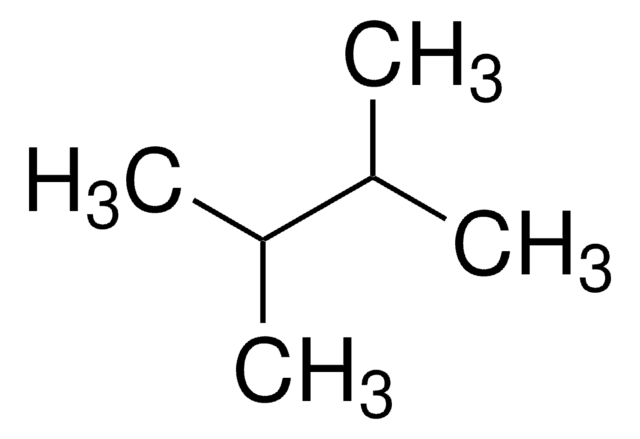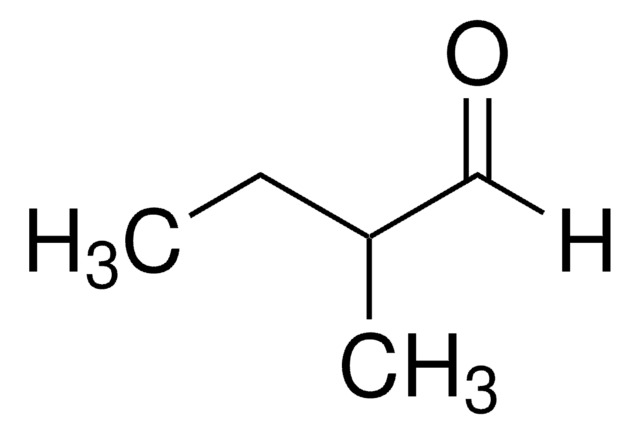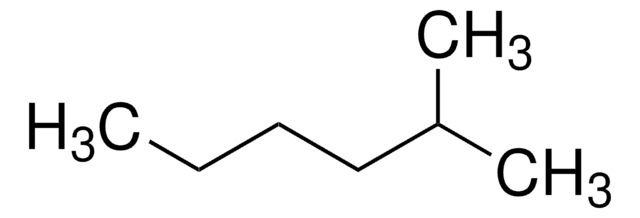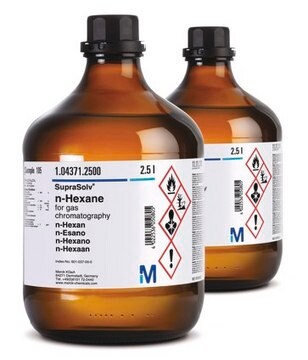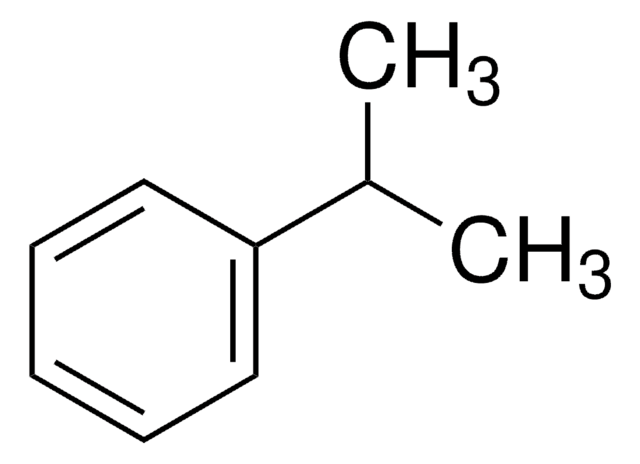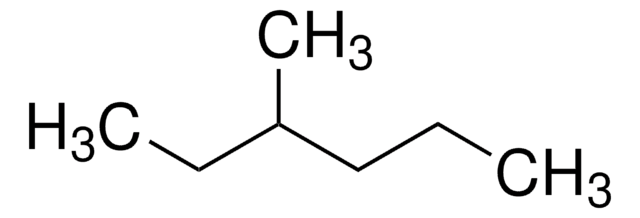68310
2-Methylpentane
≥99.5% (GC), analytical standard, suitable for gas chromatography (GC) and HPLC
Sinónimos:
‘Isohexane’
About This Item
Productos recomendados
Nombre del producto
2-Methylpentane, analytical standard
grado
analytical standard
Nivel de calidad
densidad de vapor
3 (vs air)
presión de vapor
6.77 psi ( 37.7 °C)
Ensayo
≥99.5% (GC)
temp. de autoignición
583 °F
caducidad
limited shelf life, expiry date on the label
lim. expl.
7 %
técnicas
HPLC: suitable
gas chromatography (GC): suitable
índice de refracción
n20/D 1.371 (lit.)
n20/D 1.371
bp
62 °C (lit.)
mp
−154 °C (lit.)
densidad
0.653 g/mL at 25 °C (lit.)
aplicaciones
petroleum
Formato
neat
cadena SMILES
CCCC(C)C
InChI
1S/C6H14/c1-4-5-6(2)3/h6H,4-5H2,1-3H3
Clave InChI
AFABGHUZZDYHJO-UHFFFAOYSA-N
¿Está buscando productos similares? Visita Guía de comparación de productos
Descripción general
Aplicación
Productos recomendados
Palabra de señalización
Danger
Frases de peligro
Consejos de prudencia
Clasificaciones de peligro
Aquatic Chronic 2 - Asp. Tox. 1 - Flam. Liq. 2 - Skin Irrit. 2 - STOT SE 3
Órganos de actuación
Central nervous system
Código de clase de almacenamiento
3 - Flammable liquids
Clase de riesgo para el agua (WGK)
WGK 2
Punto de inflamabilidad (°F)
19.4 °F - closed cup
Punto de inflamabilidad (°C)
-7 °C - closed cup
Elija entre una de las versiones más recientes:
¿Ya tiene este producto?
Encuentre la documentación para los productos que ha comprado recientemente en la Biblioteca de documentos.
Los clientes también vieron
Protocolos
-Xylene; Nonane; Decane; 1,2,4-Trimethylbenzene; Butylcyclohexane; Naphthalene
Protocol for GC Analysis of Hydrocarbons in Gasoline on Petrocol® DH
-1,3-Dimethylcyclopentane; 1,1-Dimethylcyclopentane; 2,2,3-Trimethylpentane; 2,2-Dimethylbutane; 2,2-Dimethylhexane; 2,2-Dimethylpentane; 2,3-Dimethylbutane; 2,3-Dimethylhexane; 2,4-Dimethylheptane; 2,4-Dimethylpentane; 2,5-Dimethylheptane; 2-Methylhexane; 2-Methylpentane; 3,3-Dimethylpentane; 3,4-Dimethylhexane; 3-Ethylpentane; 3-Methyloctane; 4-Methylheptane; Ethylbenzene; Ethylcyclopentane; 2,6-Dimethylheptane; 3-Ethylheptane
-Xylene; Nonane; Propylbenzene; Mesitylene; 1,2,4-Trimethylbenzene; 1,2,3-Trimethylbenzene; 1,3-Diethylbenzene; 1,4-Dimethyl-2-ethylbenzene; 1,2-Dimethyl-4-ethylbenzene; Durene; 1,2,3,5-Tetramethylbenzene; 1,2,3,5-Tetramethylbenzene; 2-Methylnaphthalene (β)
Nuestro equipo de científicos tiene experiencia en todas las áreas de investigación: Ciencias de la vida, Ciencia de los materiales, Síntesis química, Cromatografía, Analítica y muchas otras.
Póngase en contacto con el Servicio técnico




